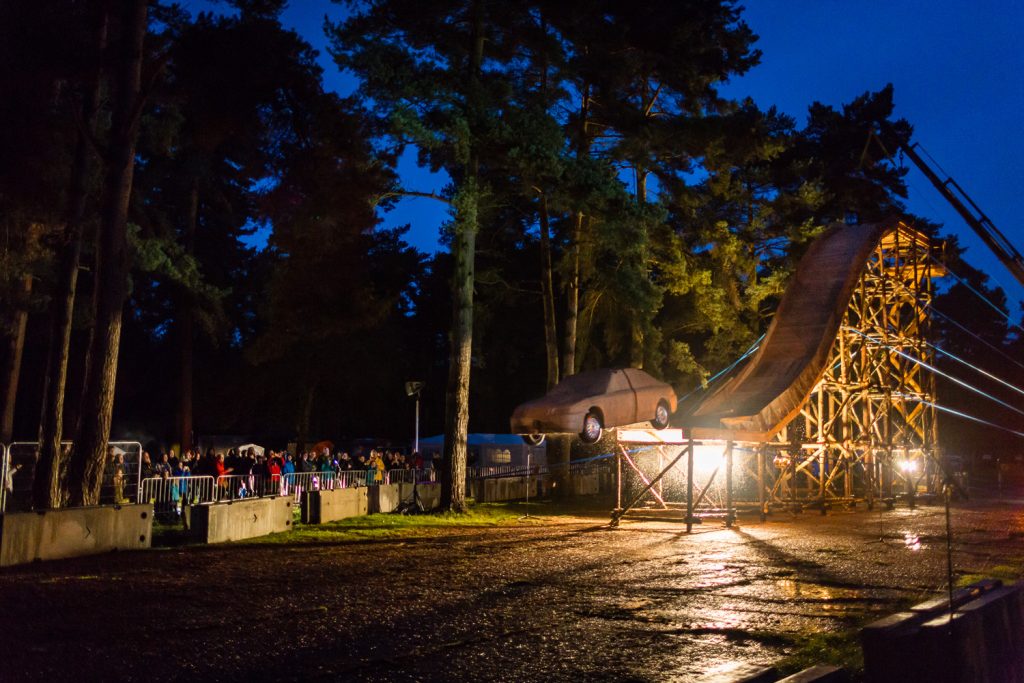On 30 September at Cannock Chase Forest’s Tackeroo site, the artist released a life-size clay replica of the final Rover 75 to leave the Longbridge car plant in Birmingham, down a temporary 10-metre ramp. The event commenced at 5.30pm with a viewing period, prior to the car being elevated to the highest point of the ramp. Speaking of the car’s release, Keith Harrison said: ‘I wanted to use this energy, this velocity to re-launch the vehicle into the unknown. Metaphorically alluding to how this industrial area may be regenerated and the car industry reimagined.’ Accompanied by a specially commissioned soundtrack, the model was released at dusk, referencing how the role of the car can transition from practical to recreational, between daytime and night.
The artist has worked with world-renowned car-modeller Anthony Tovey to reconstruct the classic Rover 75 in plywood, polystyrene and clay. Tovey manipulated the car’s clay façade ‘to communicate a sense of construction’ through visible joins and fingerprints, whilst retaining detail in the statement Rover badge: ‘traditionally, I would have used a brown wax to model prototypes, softened in an oven and then sculpted with hand-tools. This time, as Keith’s a ceramicist, we’ll be using clay from the nearby River Rea’. The river runs through the former Rover works at Longbridge and the Black Country estate where Keith Harrison’s parents still live.
A series of plywood profiles formed the supporting framework for the clay; a structure informed by Capture Point UK’s detailed 3D scan of an original Rover 75. Once the clay had been applied, the body was placed on a steel chassis complete with original Rover wheels. The artist finished the model on site at Bournville College, where the former Longbridge car plant once operated. The monumental ramp, from which the car will be released, will be constructed with the help of volunteers, using felled wood from Cannock Chase Forest.
The construction of the car and ramp was central to the commission, involving members of the community, volunteers from schools and colleges, and specialists from the automotive design field; and using materials sourced from the local area.
For the artist, the relationship between the site of production and that of the event is integral to the project: ‘The opportunity to realise a project which links the former Rover factory at Longbridge, Birmingham where my mother and grandfather worked and Cannock Chase Forest, a wilderness we visited regularly as a family whilst growing up in the Black Country is immense. The work will see the social and environmental impact of the car in forests and the demise of automotive manufacture collide.’
Documentation of the event can be found on the Jerwood Visual Arts Website and an interview with the artist and collaborator Carl Slater was aired on Resonance FM.
